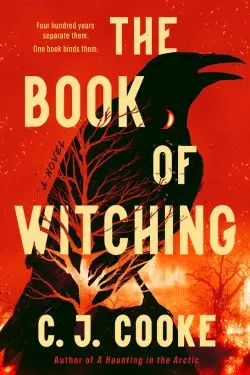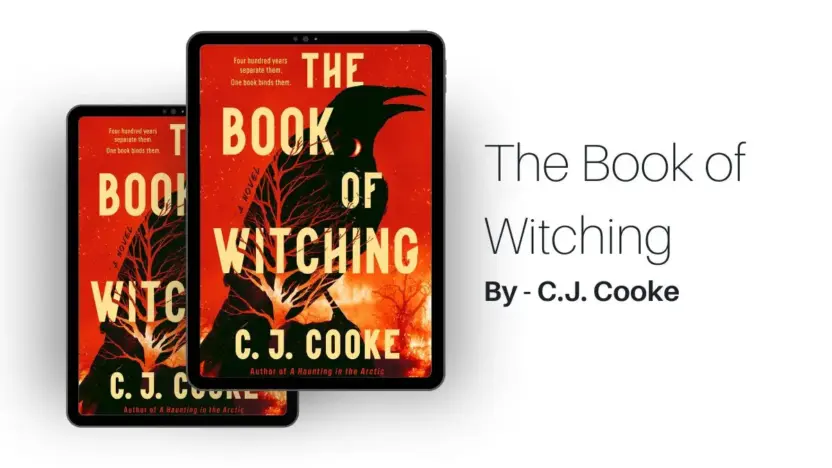“The Book of Witching” by C.J. Cooke is a compelling novel that intertwines historical fiction with supernatural elements, delivering a narrative rich in atmosphere and emotional depth. Set against the haunting backdrop of Scotland’s Orkney Islands, the story explores themes of motherhood, identity, and the lingering shadows of the past.
Dual Timelines: Bridging Past and Present
Cooke masterfully employs a dual-timeline structure, alternating between 1594 and 2024. In the 16th century, we follow Alison Balfour, a healer accused of witchcraft during the North Berwick witch trials. Her story is one of resilience and tragedy, highlighting the brutal realities faced by women of that era. In the contemporary timeline, Clem Woodbury’s life is upended when her daughter, Erin, is found unconscious with severe burns after a mysterious incident on the Orkney Islands. As Erin awakens, she claims to be someone named Nyx, setting Clem on a quest to uncover the truth behind her daughter’s condition.

Atmospheric Setting: The Orkney Islands
The Orkney Islands serve as a character in their own right, with Cooke’s vivid descriptions bringing the rugged landscapes and tumultuous seas to life. This setting enhances the novel’s gothic ambiance, creating a sense of isolation and mystery that permeates both timelines. The islands’ rich history and folklore are intricately woven into the narrative, adding layers of depth and authenticity.
Exploration of Witchcraft and Historical Injustice
At its core, “The Book of Witching” delves into the persecution of women accused of witchcraft. Alison Balfour’s harrowing experiences shed light on the fear and superstition that led to such injustices. Cooke’s meticulous research is evident, providing a poignant portrayal of the era’s societal dynamics and the plight of those wrongfully accused.
Maternal Bonds and Identity
The novel poignantly examines the bonds between mothers and daughters. Clem’s unwavering determination to save Erin mirrors Alison’s fierce love for her children, despite the centuries that separate them. Erin’s identity crisis, claiming to be Nyx, adds a psychological layer to the narrative, prompting readers to question the nature of self and the impact of ancestral legacies.
Supernatural Elements: Blurring Reality and Myth
Supernatural themes are seamlessly integrated into the story, blurring the lines between reality and folklore. The mysterious “Book of Witching” serves as a central symbol, connecting the past and present and suggesting that some curses may transcend time. These elements enhance the novel’s suspense, keeping readers engaged as they unravel the mysteries alongside the characters.
Character Development: Strength and Resilience
Cooke’s characters are well-developed, each exhibiting strength and resilience in the face of adversity. Alison’s courage during her trial and Clem’s relentless pursuit of the truth showcase the enduring spirit of women confronting societal and personal challenges. Erin’s struggle with her identity adds complexity, making her a compelling figure caught between two worlds.
Pacing and Narrative Structure
The dual timelines are skillfully interwoven, with each chapter revealing new facets of the overarching mystery. While some readers may find the pacing deliberate, it allows for a deep immersion into the characters’ lives and the atmospheric setting. The gradual unfolding of connections between the timelines culminates in a satisfying and thought-provoking conclusion.
Conclusion: A Haunting and Thought-Provoking Tale
“The Book of Witching” is a haunting exploration of history, identity, and the supernatural. C.J. Cooke’s evocative prose and intricate plotting create a narrative that lingers long after the final page. This novel will appeal to readers who appreciate historical fiction infused with gothic elements and those interested in stories that examine the enduring impact of the past on the present.
Also Read: Twenty-Four Seconds from Now…: By Jason Reynolds (Book Review)



